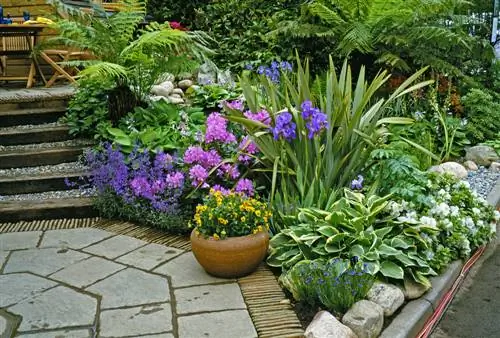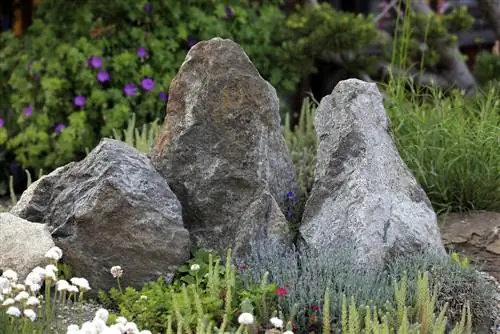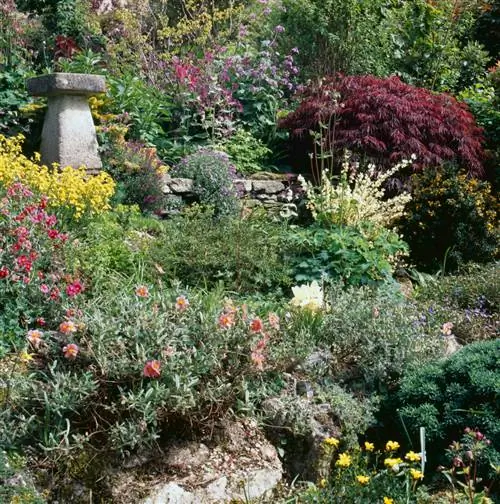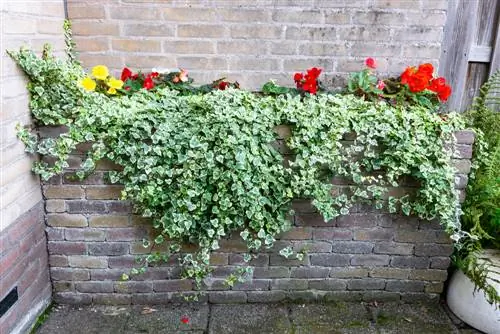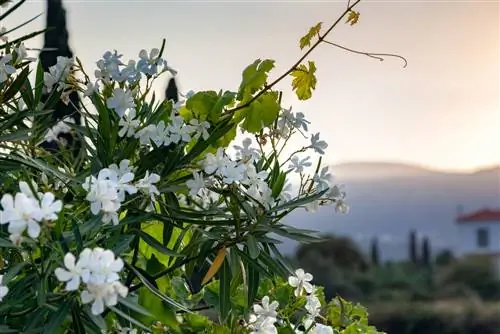- Author admin [email protected].
- Public 2024-01-02 03:03.
- Last modified 2025-01-23 11:22.
They crawl around and cover entire beds with their often carpet-like growth. They can be used to visually enhance unsightly areas. But which plants can ground cover be combined with and how do you really show them off?

How can ground cover plants be successfully combined?
To combine ground cover plants effectively, you should consider their characteristics such as foliage, flowering time, location requirements and height of growth. Popular combinations include blue cushions with candytufts, hostas with rhododendrons and ivy with rainbow ferns. Ground cover plants, for example azaleas, oleanders or hydrangeas, can also be added to pots.
What factors should you consider when combining ground cover plants?
When combining ground cover plants, their basic characteristics should be taken into account. Therefore, pay attention to the following factors:
- Foliage: deciduous, wintergreen or evergreen
- Flowering time: March to August
- Location requirements: sunny to shady, sandy to loamy soil
- Growth height: up to 40 cm
There are ground cover plants that present their foliage all year round. It is beneficial to combine such specimens with plants that look bare in winter. But you can also combine evergreen ground cover plants with other evergreen plants.
When choosing companion plants, consider the blooming period of your ground cover. Most ground cover plants show their flowers in summer.
Since the majority of ground cover plants only grow to a low height, it is important to put them in the foreground and not to cover them with the combination partners.
Combine ground cover plants in the bed
Ground cover plants are often combined with one another. But combinations with trees and perennials are also enriching, as the ground cover covers their root area and makes it visually more appealing with their leaves and flowers. However, it is important that the accompanying plants can deal with the urge to expand the ground cover and do not allow themselves to be restricted by their roots or even displace them.
These popular ground cover plants can be wonderfully combined with each other, provided thatthey have similar location requirements:
- Blue pillow
- Ribbon flower
- Funkia
- Creeping spindle
- Ivy
- Small Periwinkle
- Elf Flower
- Purple bells
Combine blue cushion with candy flower
The blue cushion and the candytuft like a sunny location on a nutrient-rich substrate. While the blue cushion comes with its mostly blue-violet flowers, the candytuft shines fantastically next to it with its bright white color. Their height also matches each other, so that overall they form a good team.
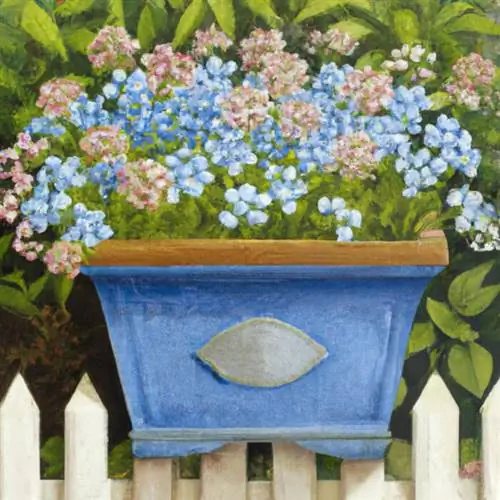
Combine hosta with rhododendron
The hosta goes well with the rhododendron as they are both plants originally native to forests. They love a partially shaded location on fresh, humus-rich ground. Plant a white variegated hosta as a ground cover at the base of the rhododendron or at a distance. The rhododendron will benefit from the presence of the hosta as it shades its root area and prevents the soil from drying out.
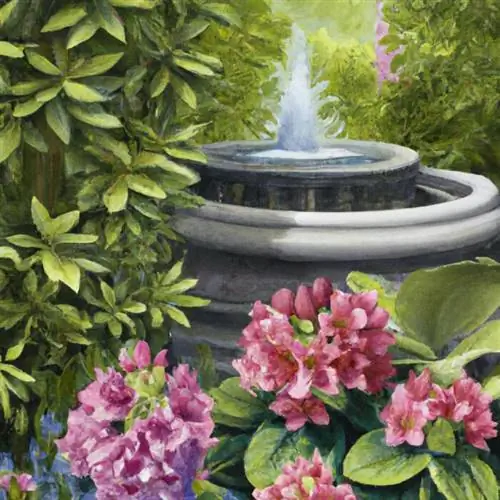
Combine ivy with rainbow fern
Ivy is often chosen as a ground cover to underline ferns such as the rainbow fern. Both the ivy and the rainbow fern do best in a partially shaded location. This union becomes even more beautiful if you plant several rainbow ferns offset from each other and let the ivy weave through them.

Combine ground cover plants in the pot
Ground cover plants are often used to underplant trees and perennials in pots. They easily take over the space on the edge of the pot and, depending on the type, hang over there nicely. Richly flowering ground cover plants such as cushion thyme are particularly impressive, as they add color to the lower area of the partner.
You can combine the following plants with ground cover plants in the pot:
- Azaleas
- Rhododendron
- Oleander
- Magnolia
- Lilac
- Spindle bush
- hydrangea

